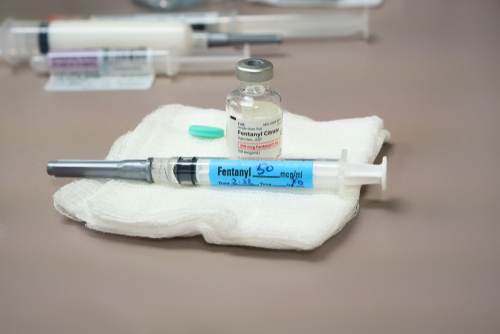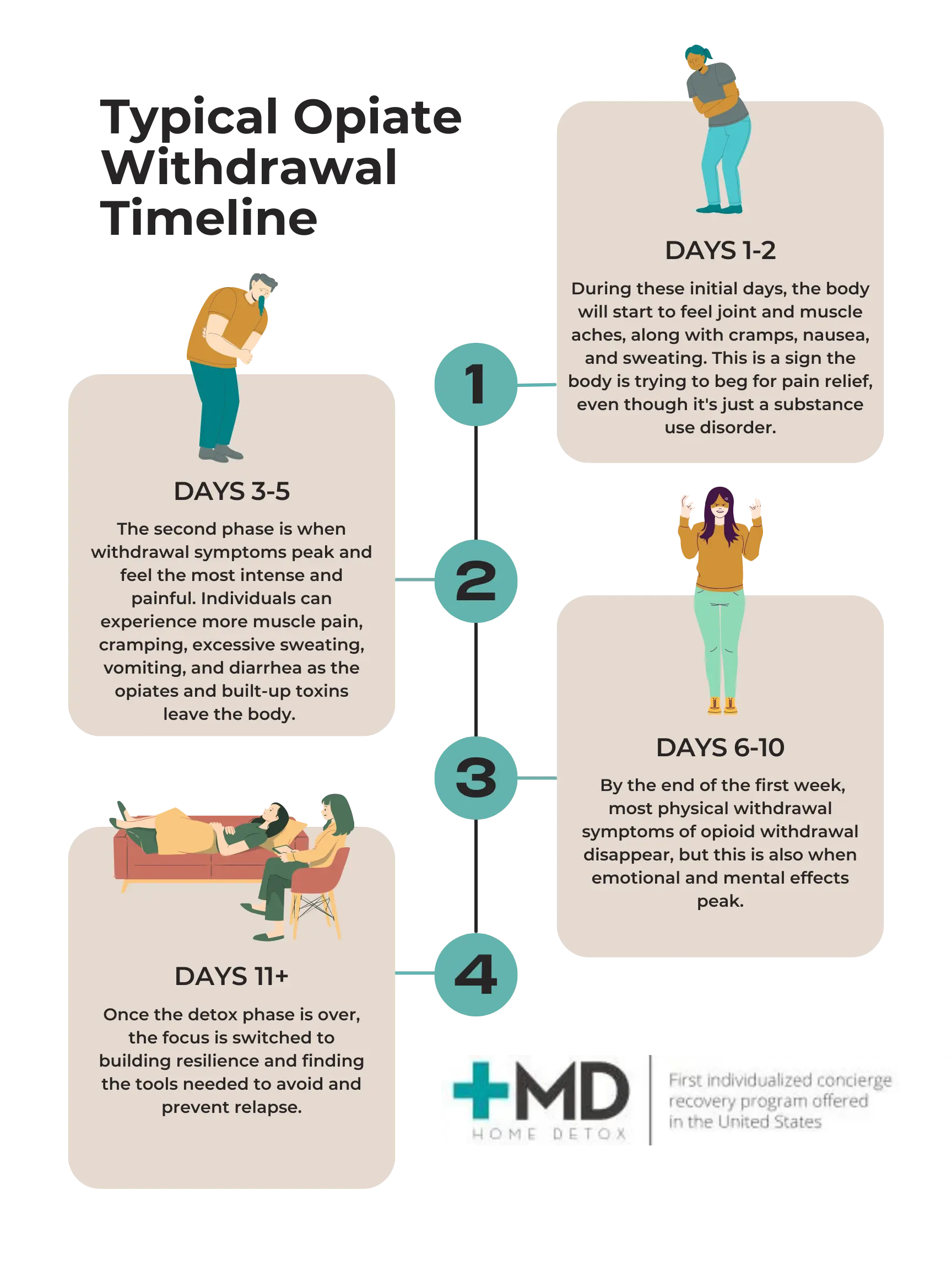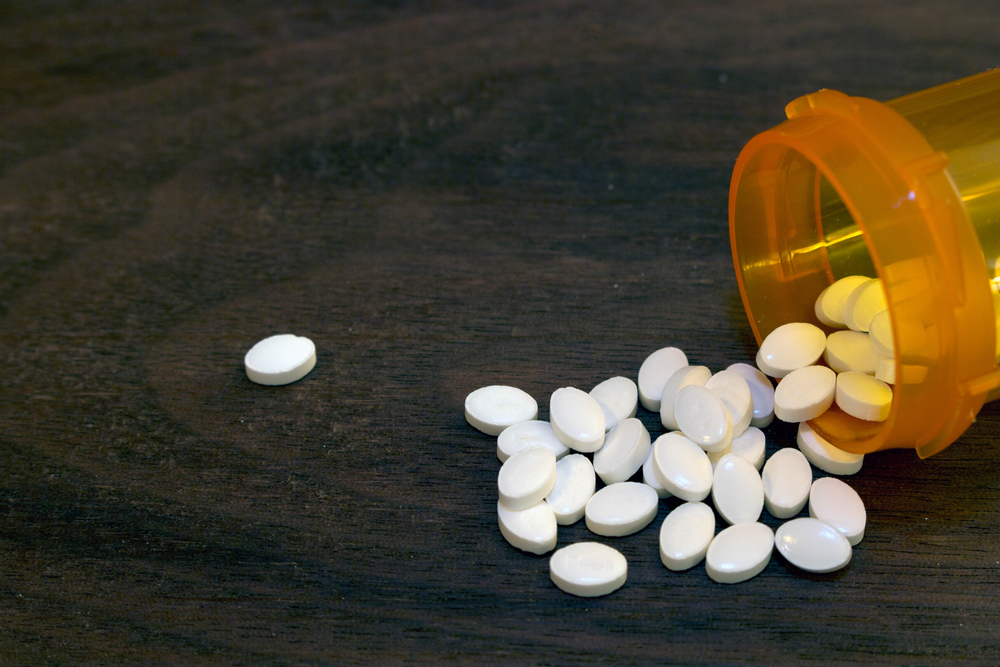If you or someone you know is dependent on opiates, stopping their use can lead to unpleasant and extremely uncomfortable withdrawal symptoms, especially without professional guidance.
This article provides insights into the typical opiate withdrawal timeline and offers guidance on preparing yourself physically and mentally for the entire process.
What Are Opiates?
Opiates are drugs derived from the poppy plant’s sap and fibers. These include opium, morphine, codeine, and heroin. While opiates and opioids are used interchangeably, opioids include lab-made drugs like hydrocodone (Vicodin), hydromorphone ( Dilaudid), and oxycodone (Oxycontin, Percocet). The pharmaceutical industry has developed over 500 molecules classified as opioids ranging from painkillers, anesthetics, cough medicine, and even withdrawal medication like buprenorphine and methadone.
Opiates bind to specific receptors in the central nervous system, particularly in regions responsible for pain regulation and reward. By interacting with these receptors, opiates and opioids can produce pain relief, euphoria, and a sense of relaxation. However, this is what makes opioids addictive and includes some of the most dangerous withdrawal symptoms.

Why Do Opiates Cause Withdrawal Symptoms?
Once your brain gets a taste of opiates, the almost instant pain relief and increase in dopamine can drive your brain to crave or rely on them. Soon the brain links pleasure with taking opiates and decreases its natural ability to produce dopamine. And because opiates also affect the reward parts of your brain, it soon pursues opiates and feels rewarded once the drugs kick in, thus developing an opioid use disorder.
Individuals who use illegal street versions of opiates, misuse prescription opioids, and even those who take them exactly as prescribed can develop physical dependence and addiction. Once your brain adapts to their effects and can’t function without the stimulus from opiates, abruptly quitting or lowering the dose can cause severe withdrawal symptoms, especially in individuals who take extended-release versions like fentanyl.
Readers may also enjoy: Does Your Body Detox From Drugs When You Start Eating Healthy?
Typical Opiate Withdrawal Timeline
The typical opiate withdrawal timeline is around one to ten days, but long-acting opioids like methadone or fentanyl can last as long as three weeks before the final withdrawal symptoms subside. The overall timeline usually depends on the type of opiate taken, the time of last use, the duration of the opiate addiction, and the time between doses.
Here’s a typical timeline you can use for reference.
- Days 1-2: The initial phase of opiate withdrawal is called the acute phase. This can begin within 8 to 12 hours for short-acting opioids like heroin, oxycodone, and hydrocodone. For long-acting opioids, since they stay in your system longer, symptoms can start around 24 to 72 hours after the last use. During these initial days, the body will start to feel joint and muscle aches, along with cramps, nausea, and sweating. This is a sign the body is trying to beg for pain relief, even though it’s just a substance use disorder.
- Days 3-5: The second phase is when withdrawal symptoms peak and feel the most intense and painful. Individuals can experience more muscle pain, cramping, excessive sweating, vomiting, and diarrhea as the opiates and built-up toxins leave the body. It’s during this phase that individuals can feel the strongest urges to use opiates again.
- Days 6-10: By the end of the first week, most physical withdrawal symptoms of opioid withdrawal disappear, but this is also when emotional and mental effects peak. As depression and anxiety kick in and the detox phase is over, behavioral therapy can help address and manage these mental feelings, including the potential for post-acute withdrawal syndrome.
- Days 11+: Once the detox phase is over, the focus is switched to building resilience and finding the tools needed to avoid and prevent relapse. If you’re admitted to an addiction treatment program, chances are the center will continue to use therapy and holistic healing methods to help you make it through a residential or partial hospitalization program.

How To Physically Prepare For Opiate Withdrawal
The physical symptoms will feel unbearable at first, but with the help of professionals and by following some of the tips below, you can ease your symptoms and remind yourself these effects don’t last forever.
- Stay hydrated: Drinking plenty of water at the detox center can help prevent dehydration, which is common during withdrawal as individuals vomit or experience diarrhea.
- Eat nutritious meals: While you’re at a detox center or are using an at-home detox program, make sure you eat balanced meals with fruits, vegetables, and proteins to give your body the nutrients it needs.
- Get enough rest: Try to get enough sleep each night to help manage the fatigue that often accompanies withdrawal. Your body needs all the strength it can get during this important phase.
- Engage in light exercise: Gentle exercises like walking or stretching can help alleviate muscle aches and keep your brain occupied with movement. But don’t overdo it since you won’t be at your peak physical strength until a couple more weeks.

How To Mentally Prepare For Opiate Withdrawal
Here are some key ways to mentally prepare for opiate withdrawals before and during the detox phase so that you can overcome these scary but manageable symptoms.
Before the detox phase:
- Keep an open mind: Approach the detox process with a willingness to change and embrace the opportunity for a healthier, drug-free life. Chances you or a loved one realized the negative impacts of drug abuse and having a sincere desire to heal can help anyone overcome it.
- Stay hopeful: Keep a positive outlook and remind yourself that withdrawal symptoms are temporary and necessary for recovery. You only need to tackle one step at a time, so don’t overwhelm yourself with what could happen a few weeks from now.
- Educate yourself: Do some more research into the withdrawal process, potential challenges, and any coping strategies you’d like to learn. Knowing what to expect can help you stay calm and mentally prepare for the coming days.
- Establish a support system: Seek out understanding and supportive friends and family who also want to see you heal and overcome substance abuse. Once you leave a detox program, supportive friends can keep you motivated and accountable on your recovery journey.
During the detox phase, it’s important to embrace and utilize the tools and services offered by the detox center/addiction treatment center. Addiction and detox specialists are there to help you and can give you the strength to stay focused on your goals, be patient and kind to yourself, and practice self-care. They may also prescribe medication like Suboxone or Naltrexone to manage the cravings that can linger after detox.
Read more: Suboxone vs Subutex: Differences, Similarities, & Effectiveness

Medical Detox With MD Home Detox
If you or someone you know needs help with opioid addiction and is struggling to commit to the detox process, contact MD Home Detox. Our detox programs can help you overcome the scary and lingering effects of opiate withdrawal through various programs tailored to your needs.
If you aren’t comfortable with going into a facility, you can choose our at-home detox program, where medical professionals come to your home and set you up with everything you need. Or, if you are interested in more advanced programs, our rapid detox plan can help you safely process withdrawal symptoms while under sedation. Call today to learn more about how MD Home Detox can help.

